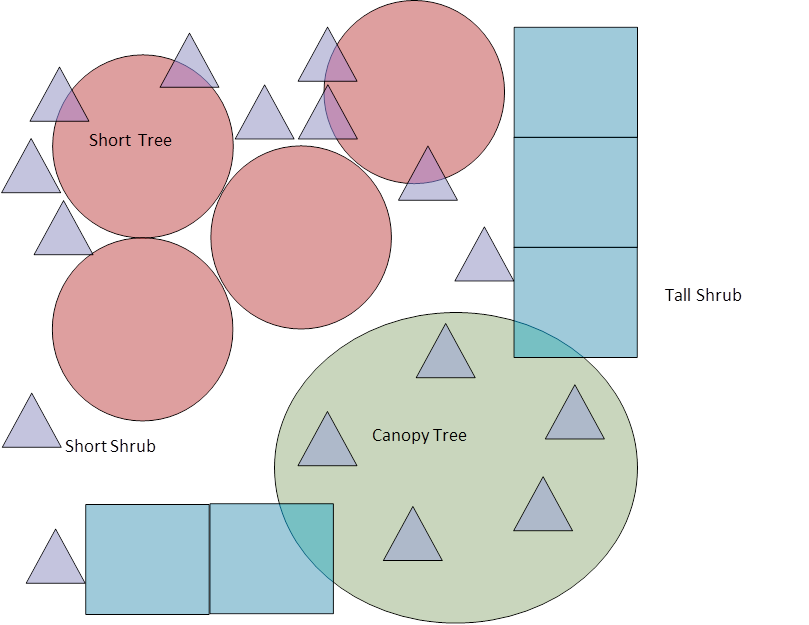|
There is both a long and short answer to that question and I will try to keep it short and simple. “A food forest is the intentional planting of food producing plants designed to mimic a natural forest.” That wasn’t so bad right well unfortunately that definition while short and easy to digest does a poor job of fully encompassing what exactly a food forest is. To be a food forest it must contain the following attributes,
To me you can’t truly call something food forest without meeting those criteria. Now I know there will be people out there that will disagree with me and that is ok. What makes up a food forest is a very local thing with the climate, soils and need of the people determining what will make up the nature of a food forest. Getting started… You start a food forest you need three things to make it worth your time,
So with that in mind you know that you need to start the design with the tallest thing which is your canopy layer which would typically be made up of nut trees, oaks, or maples. One the next page you can see a sample diagram for how a small patch of food forest can be laid out. The large canopy tree is located in the south east corner of the design. This keeps the large shade cast by the tree on the smaller fruit trees only in the morning and lets them get plenty of midday and afternoon sun. It also puts things in groups and layers. You can put smaller planting underneath larger one assuming that they can get adequate sun to grow and produce. This layering allows you to pack more into a small space and in a well-designed food forest you can up to 7 layers of plants, mushrooms and root crops growing in the same space. This layering and grouping is not only space saving but it better mimics natural forest patterns of an active canopy and several understory layers. For more information like this please check other articles found on the Green Living Library
0 Comments
Leave a Reply. |
AuthorHello my name is Josh Larson and I am the creator of the Green Living Library. Here on the blog you will find updates to content found in the Green Living Library as well as stories from those living the sustainable life already. Archives
December 2021
Categories
All
|
